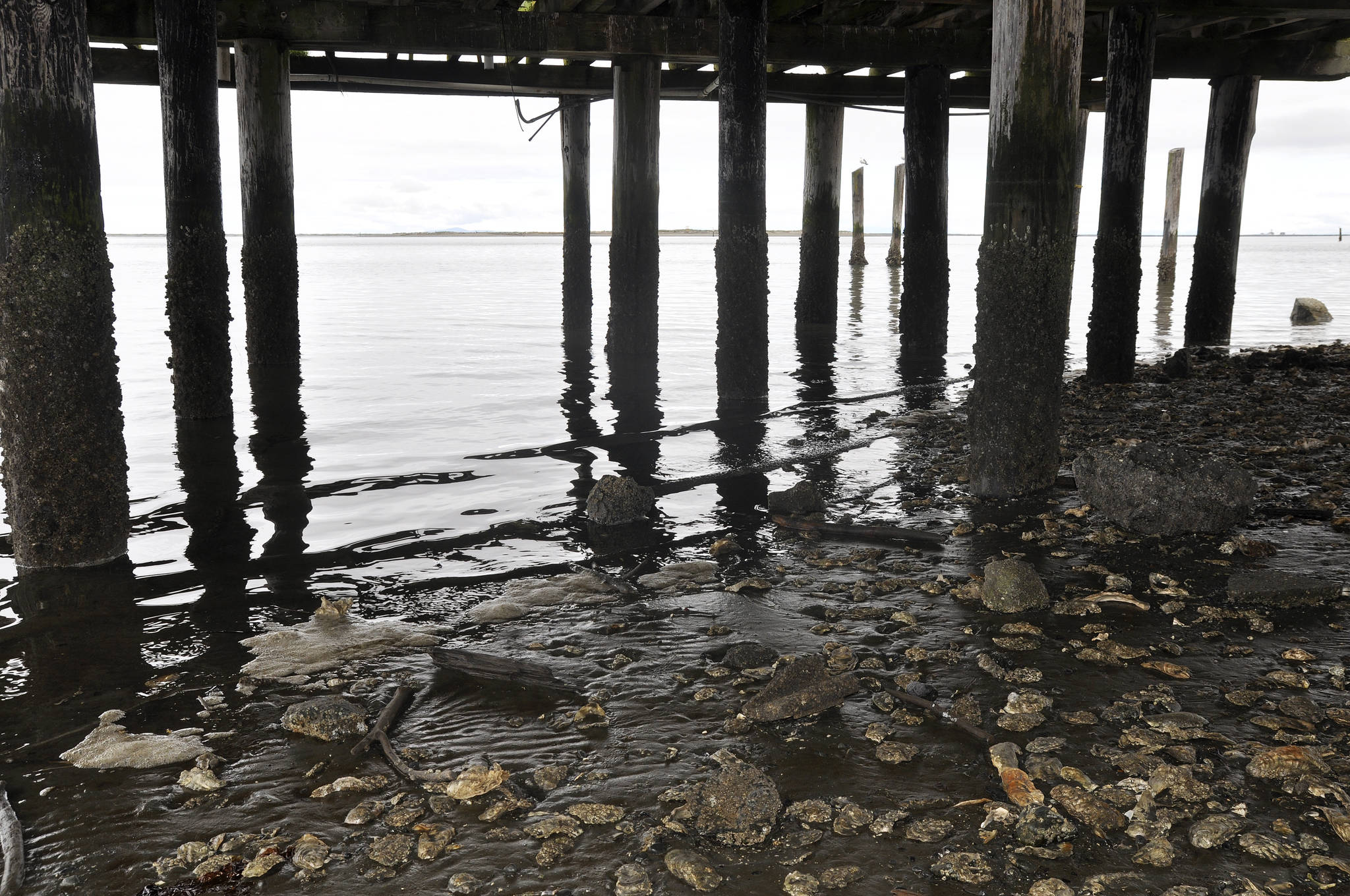SEQUIM — Washington Sea Grant’s Crab Team has captured seven more green crabs on the Dungeness Spit since 13 of the invasive European green crabs were found there last week.
Crab Team Program coordinator Emily Grason said traps have been pulled from the water on Graveyard Spit, a part of the Dungeness Spit across from Dungeness Landing near Sequim, until stakeholders meet today to discuss their findings and next steps.
Grason said 20 crabs might not sound alarming, but to researchers, it causes concern because a small number of crabs can quickly become a large population.
“To us, it’s not so much the number of crabs that gives us worry but the fact that traps in the same location are continuing to bring up more and more crabs, suggesting there is a somewhat hidden population at that location that will require a continued aggressive trapping effort to prevent population growth,” Grason said.
To combat the green population, representatives of the U.S. Fish and Wildlife Service, the state Department of Fish & Wildlife and Washington Sea Grant will meet with stakeholders only from 1 p.m. to 4 p.m. today at the Jamestown S’Klallam Tribe’s administration building, 1033 Old Blyn Highway, Blyn.
They’ll discuss their findings and next steps, the event’s agenda states.
The European green crab, a small shore crab measuring up to 4 inches across, can be found worldwide. Where it is abundant, it has been blamed for damaging shellfish harvests and seagrass beds, Washington Sea Grant staff said.
Local researchers also say the green crab could threaten native organisms such as Dungeness crabs.
The crab is distinctive with five spines on the shell beside its eye. But despite its name, it can be green, brown or reddish, typically with orange joints.
So far, the green crab population in Dungeness is the largest found in inland Washington after green crabs were quickly captured in August 2016 on San Juan Island and later Padilla Bay National Estuarine Research Reserve near Mount Vernon.
No subsequent crabs have been reported in those areas after continued trapping efforts, researchers said.
The nearest known population of green crab is west of Victoria, in the Sooke Inlet, Crab Team staff report.
Grason said Dungeness’ situation is different from those areas because the crabs were found too far apart to mate, whereas at Dungeness Spit, multiple crabs are being found at the same site over successive days of trapping.
“This indicates a situation where the population could grow very quickly if we don’t intervene,” she said.
Allen Pleus, state Department of Fish & Wildlife’s Aquatic Invasive Species Unit lead, said that “directly addressing the threat of green crab requires both early detection and rapid response with the goal of finding isolated populations when they are still rare and reducing or eliminating them.”
Lorenz Sollmann, deputy project leader at the Washington Maritime National Wildlife Refuge, has led rapid-response trapping efforts along the Dungeness Spit.
Grason said that this time of year, green crabs are readying to mate. It’s difficult to tell what the situation is on the spit.
“Crabs in the process of molting and hardening their new shells often do not come to traps because they are vulnerable [and] crabs that are in a pre-mating embrace will not come to traps either,” she said.
Of the 20 crabs captured, Grason said they are both pre- and post-molt crabs of both sexes. Cool weather might have given researchers a reprieve as to when the crabs mate, she said, so it could give them a longer window to remove the green crabs.
Dungeness Spit is part of the Crab Team’s expanding early detection network of 36 sites maintained by volunteers, tribes and agencies. Sea Grant staff estimate there are at least 400 sites in Puget Sound, the Strait of Juan de Fuca and the San Juan Islands possessing at least one ideal habitat feature for European green crabs.
Those who want to help with the effort to stop the European green crab can look for them in salt marshes and pocket estuaries, Crab Team staff said.
For more resources on identifying the green crab and places to look, visit wsg.washington.edu/crabteam. For those who might have found a green crab, send photographs and location to the Crab Team at crabteam@uw.edu.
________
Matthew Nash is a reporter with the Olympic Peninsula News Group, which is composed of Sound Publishing newspapers Peninsula Daily News, Sequim Gazette and Forks Forum. Reach him at mnash@sequimgazette.com.

